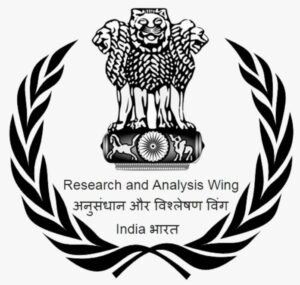The history of contemporary Indian intelligence may be found in the British colonial era, when organizations like the Dacoity Department and the Thuggee Department were entrusted with fighting local crime. This pioneering effort in gathering intelligence set the stage for later organizations like the Central Special Branch and, eventually, the Intelligence Bureau (IB), which managed limited foreign intelligence in addition to internal intelligence until Research and Analysis Wing was established.
Formation and Early Challenges of Research and Analysis Wing

The establishment of Research and Analysis Wing was a watershed in the history of Indian intelligence. R&AW was mandated to concentrate only on external threats and followed strict secrecy procedures. Its agents, who were frequently identified by aliases, underwent intense training before being covertly sent all over the world. In spite of early obstacles including bureaucratic roadblocks and political meddling, R&AW quickly became a powerful force in the world of international intelligence.
You can also check these RTI for better unerstanding
Operational Capabilities and Challenges of Research and Analysis Wing
R&AW’s operational capabilities were demonstrated by important missions and calculated actions. Research and Analysis Wing was essential in defending India’s national security interests, from obtaining vital intelligence during conflicts to carrying out risky clandestine operations. But the agency also had to deal with internal strife and public scrutiny, especially during times of political unrest like the Emergency that was declared in the middle of the 1970s.
Key Operations and Strategic Milestones of Research and Analysis Wing

Operational achievements of R&AW include infiltrations into enemy areas, gathering intelligence in adjacent nations, and playing a critical role in geopolitical crises such as the Bangladesh Liberation War. These activities demonstrated India’s aggressive approach to defending its strategic interests, while also influencing regional dynamics.
Internal and External Scrutiny of Research and Analysis Wing
Political disputes, including claims of mishandling under the Emergency, brought R&AW under close examination. Committees were established to look into claims of operational misbehavior and political influence, which resulted in changes to the agency’s leadership and reforms. Research and Analysis Wing persisted in concentrating on strategic intelligence gathering and operational excellence in spite of these obstacles.
Technological Advancements and Global Collaborations of Research and Analysis Wing

R&AW took use of developments in cyber intelligence and digital espionage in the field of intelligence technology. Working together with foreign partners, such as Israel’s MOSSAD, improved R&AW’s capacity to keep an eye on international threats and protect vital intelligence resources.
Challenges and Adaptations of Research and Analysis Wing
The agency had to overcome formidable obstacles to undermine Pakistan’s nuclear aspirations and work around political limitations on its operational autonomy. R&AW showed resiliency and creativity in defending India’s national security objectives by adapting its tactics to face changing threats in spite of losses.
Revival and Modernization of Research and Analysis Wing
Under Prime Minister Indira Gandhi’s direction, Research and Analysis Wing saw a comeback in the 1980s, which was a time of modernization and rejuvenation. Enhancing operational capacities, incorporating state-of-the-art technologies, and achieving notable strategic achievements highlighted R&AW’s crucial function in molding India’s security strategies.
Legacy and Future Prospects of Research and Analysis Wing

R&AW continues to be in the forefront of defending national interests as India navigates increasingly challenging geopolitical environments. The agency’s lasting influence on Indian security policies is demonstrated by its history of operational competence and strategic vision. As we look to the future, R&AW will continue to play a crucial role in India’s intelligence community by taking on new challenges and seizing opportunities in an increasingly linked world.
ALSO READ ABOUT: CAN GET EVM HACKED?
Conclusion
The history of Research and Analysis Wing is not just a story of successful intelligence operations and covert operations; it also serves as evidence of India’s proactive approach to defending its sovereignty and interests as a nation. India’s security architecture continues to rely heavily on the agency’s legacy of operational competence and strategic insight, even as it adapts to new threats and changes in the world.
Final Thoughts
As evidenced by its rich history and critical accomplishments, Research and Analysis Wing serves as a symbol of India’s proactive defense of its interests in national security. Research and Analysis Wing has been resilient and creative in navigating challenging environments, from its founding amid political challenges to its critical role in influencing regional dynamics. R&AW’s legacy of operational excellence and strategic foresight will continue to reverberate in the annals of world intelligence history as India gets ready to face future challenges.
